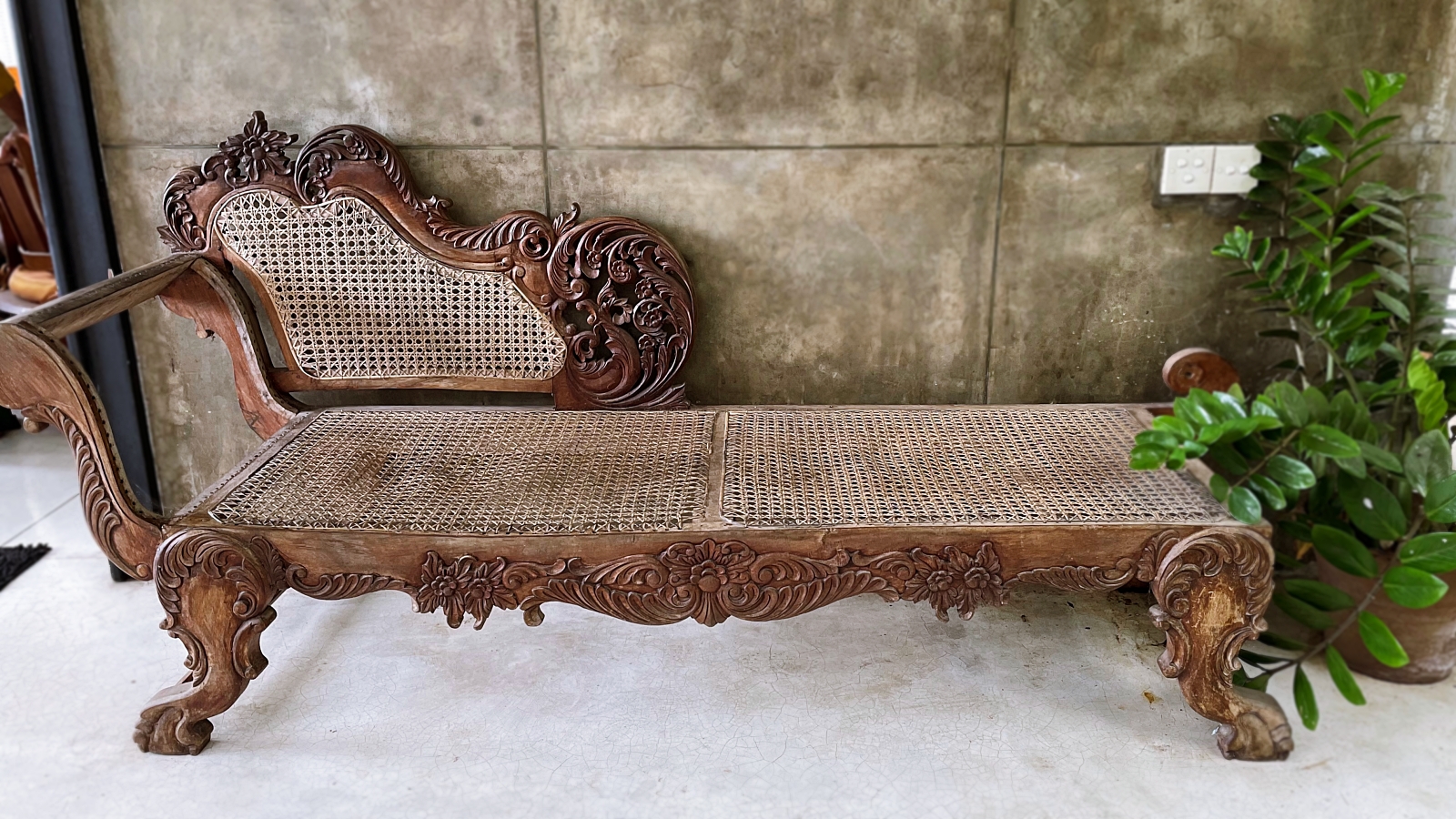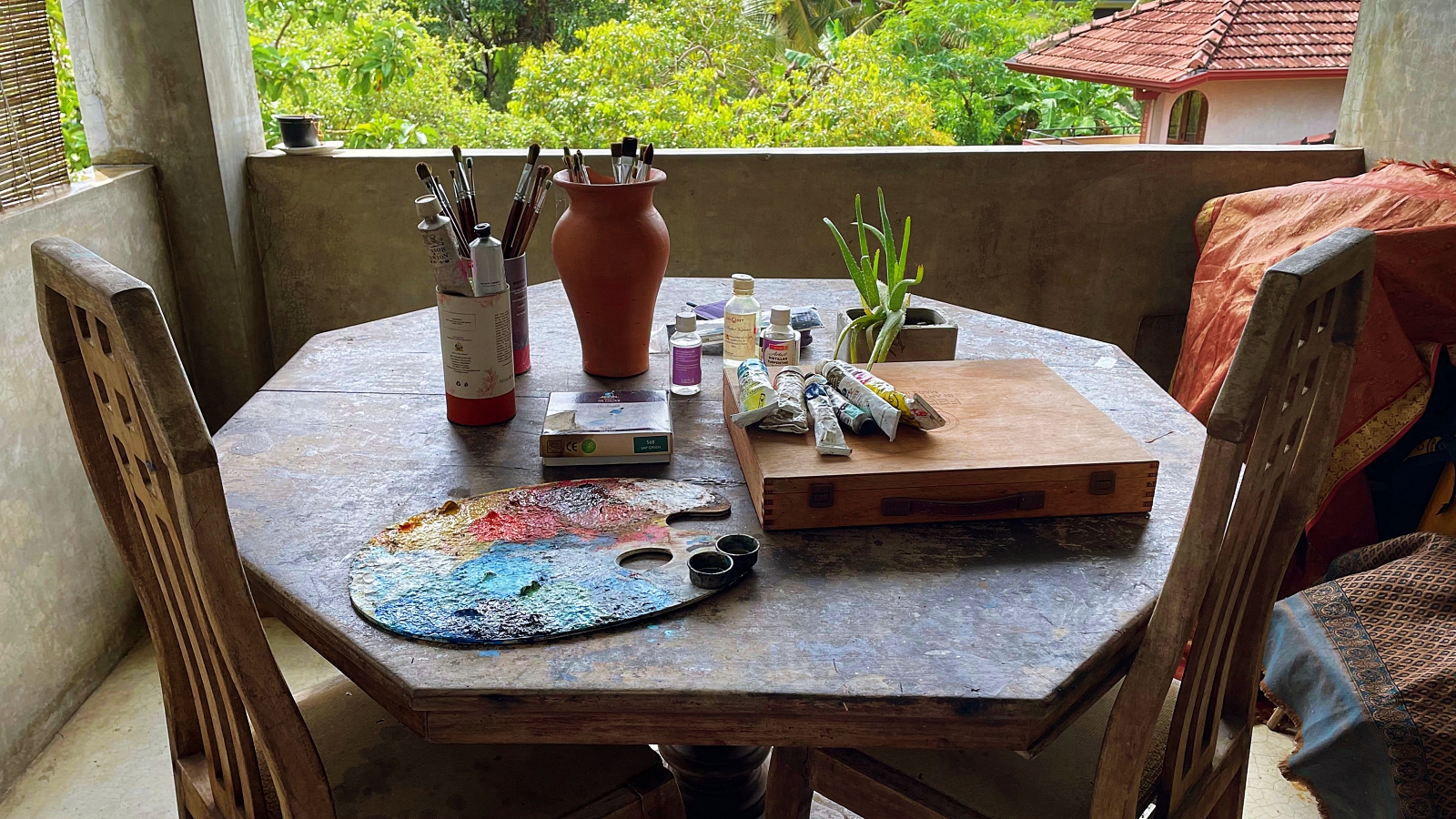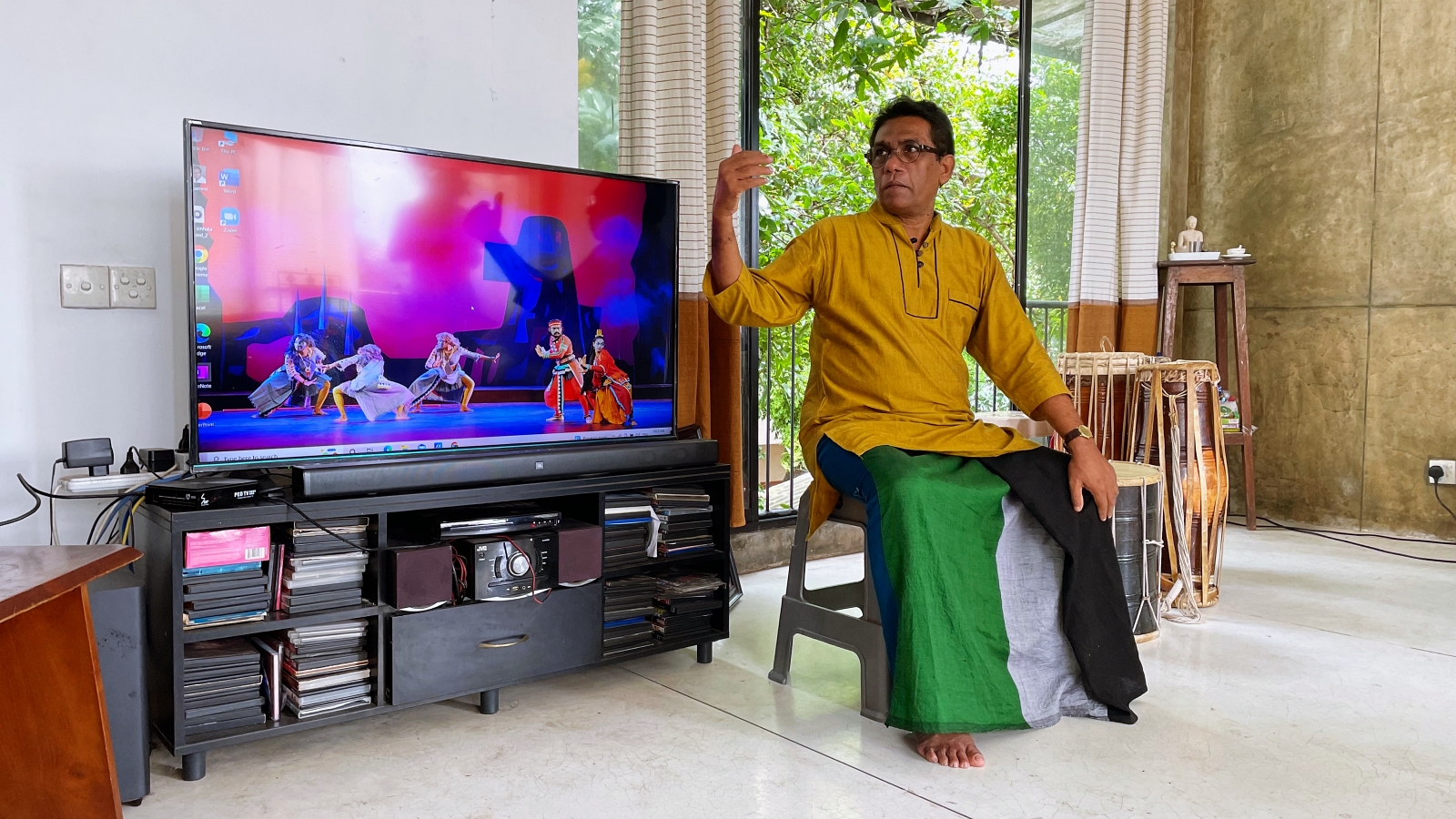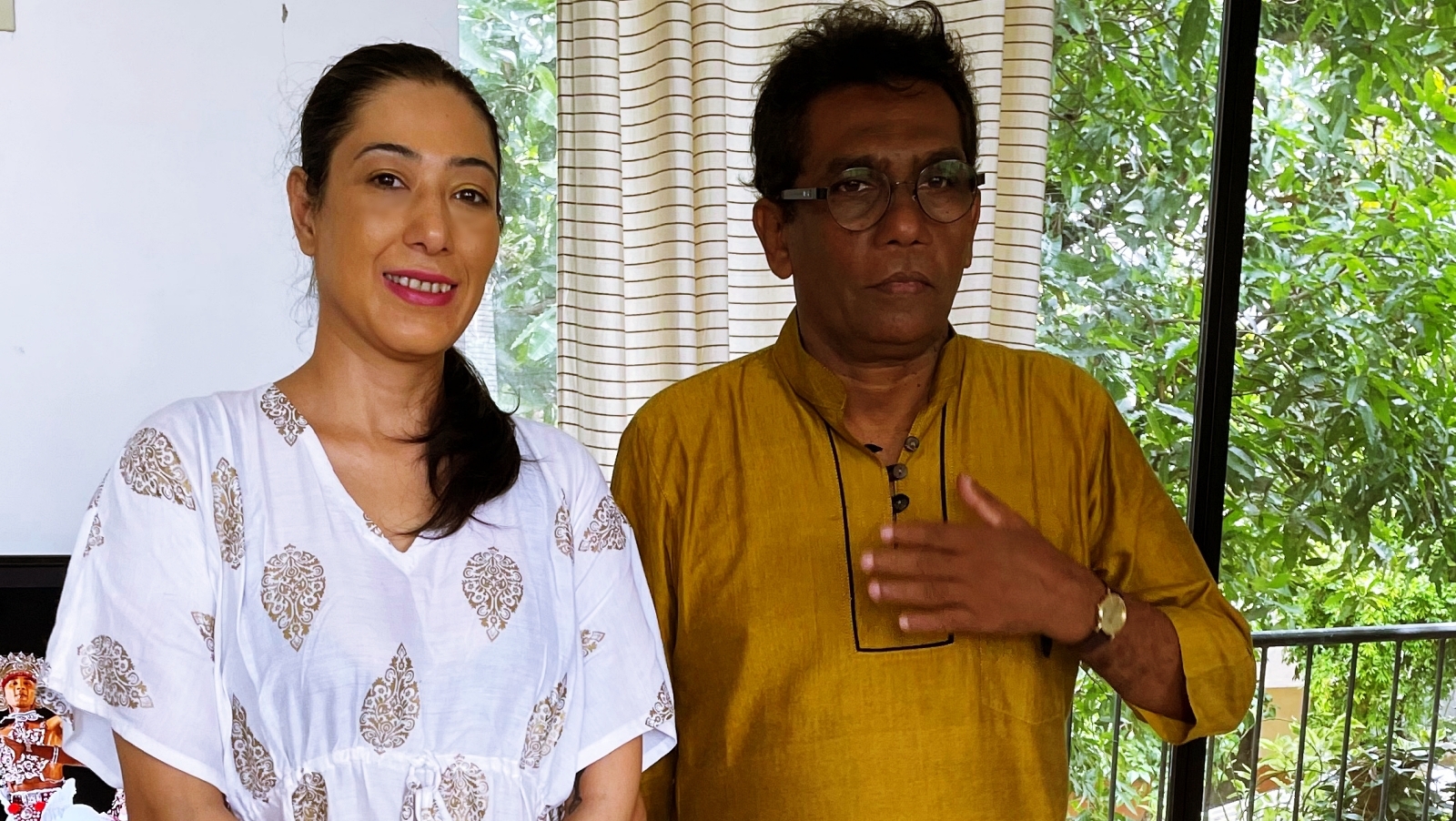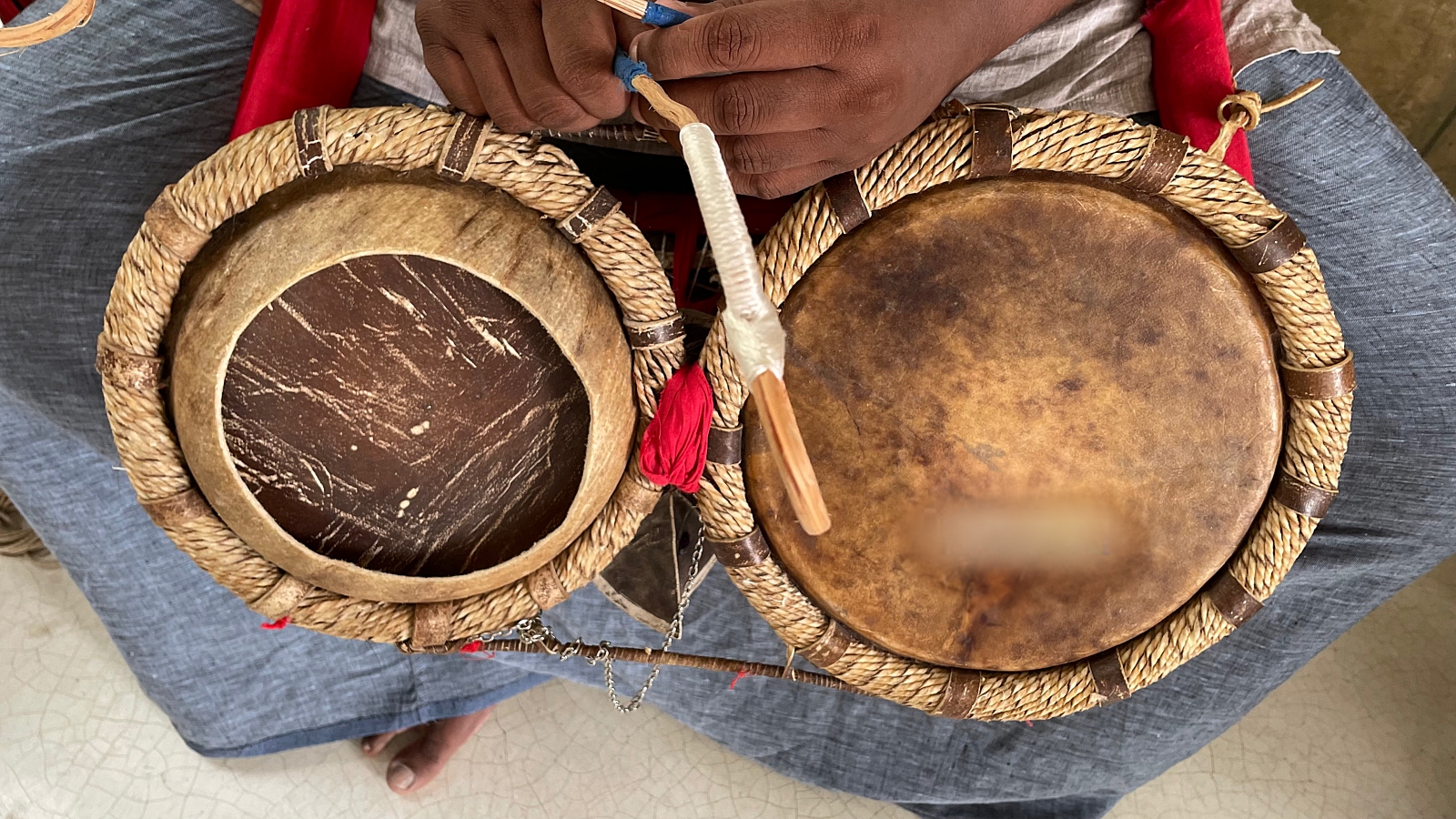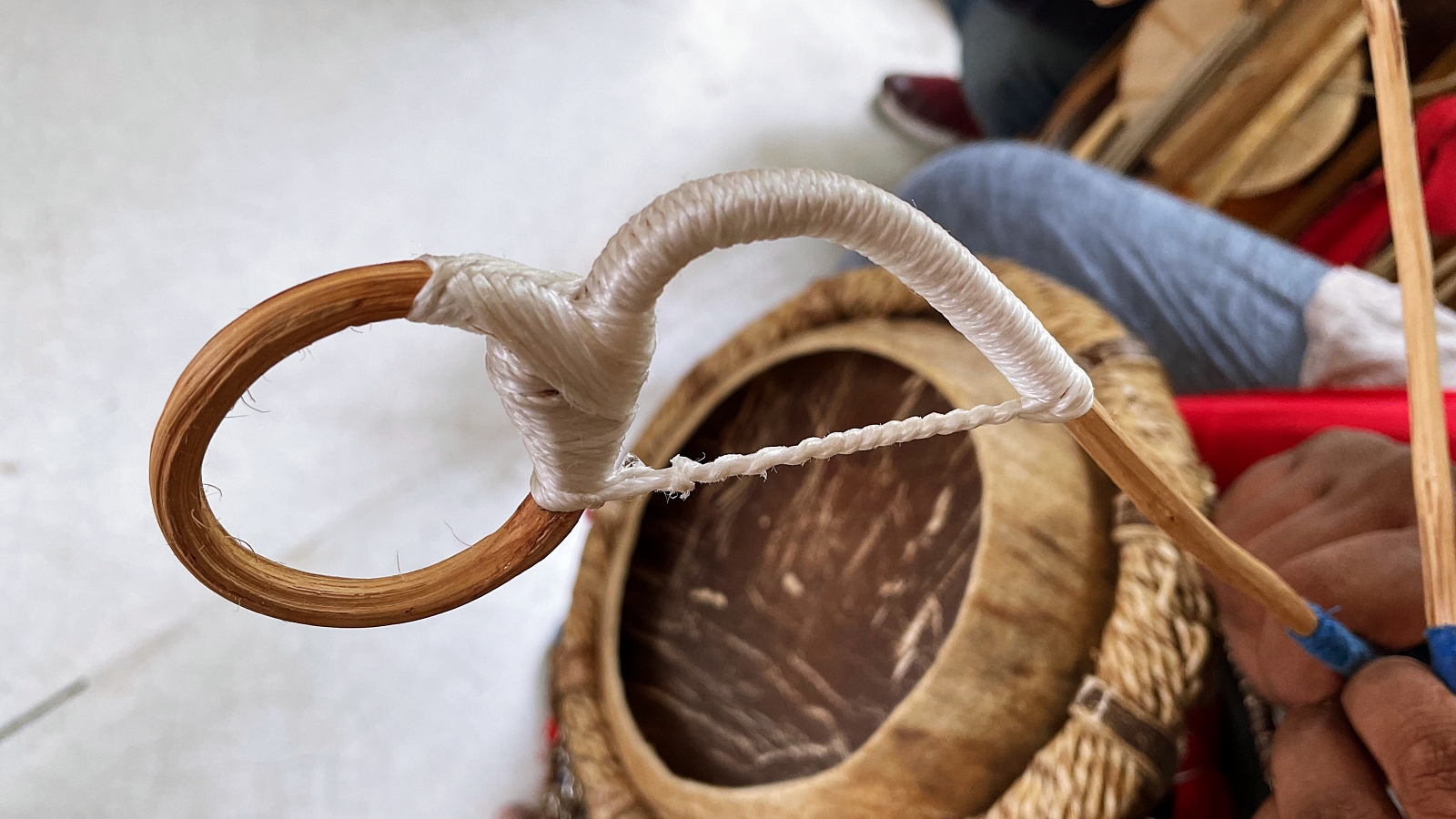Ravibandhu Dance Academy: Into the 8th-generation Kandyan Art Lineage
Because dance is the highest and most beautiful form of art, it is life itself rather than an extract or an abstraction of life; and the reason for this is that our bodies serve as the dance’s instrument.
Faint drumbeats filled my ears as I clambered up the steep Kotte road next to the Solis hotel on an overcast day in the first week of August. I travelled all the way to Sri Jayawardenepura Kotte to visit the founder of Ravibandhu Dance Academy and learn about the diverse Buddhist traditions, including the distinctive music and dance forms of Sri Lanka. The pounding grew louder as I drew up to the front entrance of an old structure housing Vidyapathy’s residence on the upper stories and a dancing academy on the ground floor. Young ones were rehearsing on the ground floor – some playing the drums while others practising the Kandyan dance forms.
While the first floor verandah opens to a handcrafted antique chaise lounge and a collection of paint, and paintbrushes against a backdrop of lush verdure; the interiors of Vidyapathy’s home are an austere, open space peppered with drums, paintings, framed photos, and other musical equipment. We sat in the living room, where he offered me Ceylon tea with cookies, introduced himself and his family, and chattered about Sri Lankan traditional dance techniques. The expression comprised live demonstrations by him, his son Jithendra, and his daughter Amrita, as well as illustrations displayed on a large television.
Ravibandu is the oldest son of Malathi Somabandhu, a renowned Kandyan dancer, and the granddaughter of legendary 18th-century dance master Algama Kiriganitha; and Kalashoori Somabandhu Vidyapathy, a well-known classical painter, sculptor, and Sri Lanka’s first costume and set designer for dance and ballet since the 1940s. In 1997, Ravibandhu introduced the “Kala Beraya” drum to the island’s music scene, considerably contributing to the evolution of Sri Lanka’s progressive drumming style. His maternal and paternal ancestors are traditional dancers and also painters of temple murals in Sri Lanka.
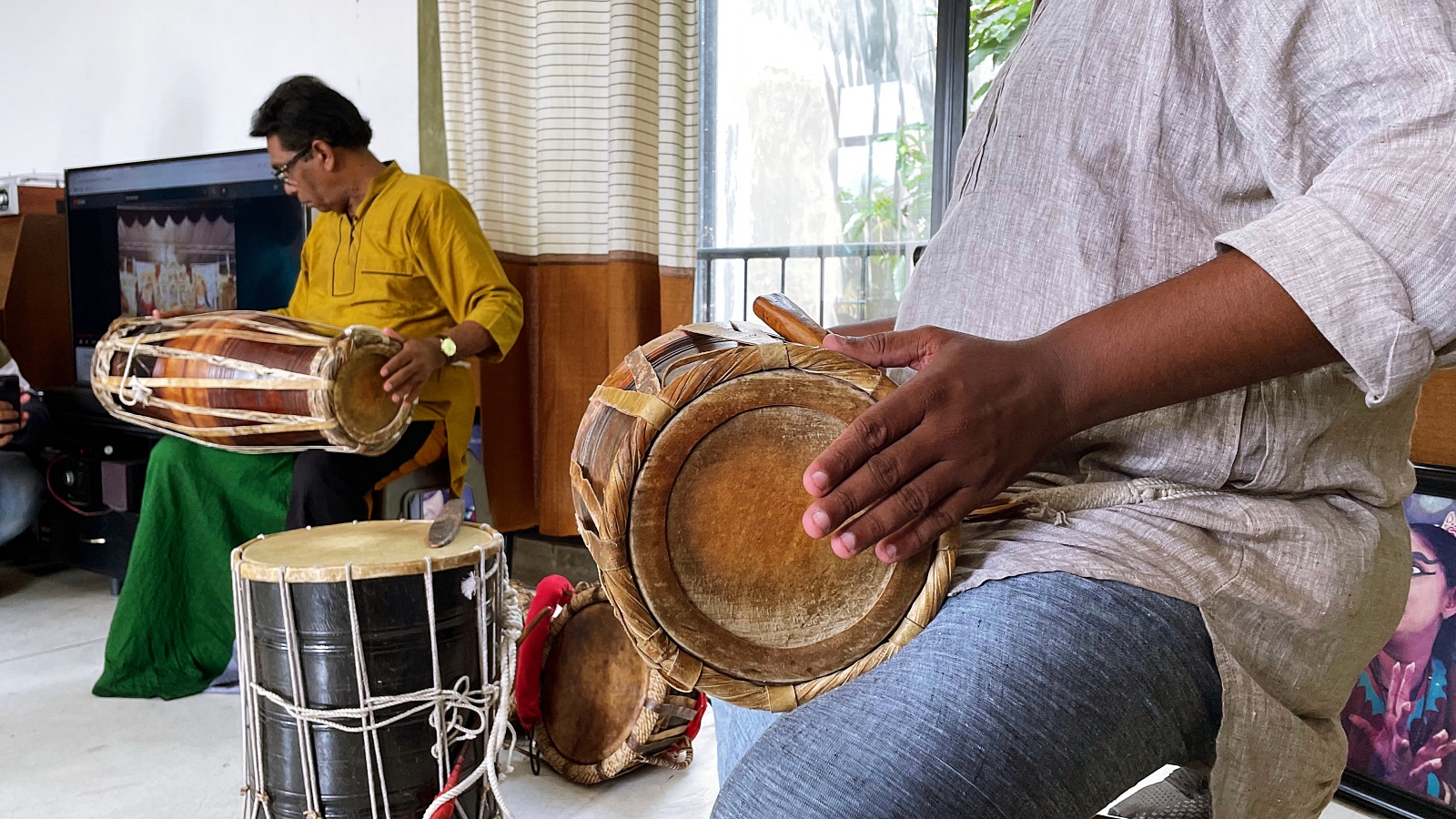
Vidyapathi, identified himself as a dancer, choreographer, traditional percussionist, composer to a limited extent, and an amateur painter. Ravibandhu studied traditional drumming under the tutelage of renowned percussionists Guru Piyasara Shilpadhipathi and Guru Punchiguru and classical Kandyan dance under the famed dancers Great Gurus Chitrasena and Vajira. He is also a well-known Kathakali actor and dancer who studied at the Kerala Kala Mandalam in India and learned music under the tutelage of Shri P.V. Nandasiri of Sri Lanka and Ustad David Podiappuhamy of Maihar, India.
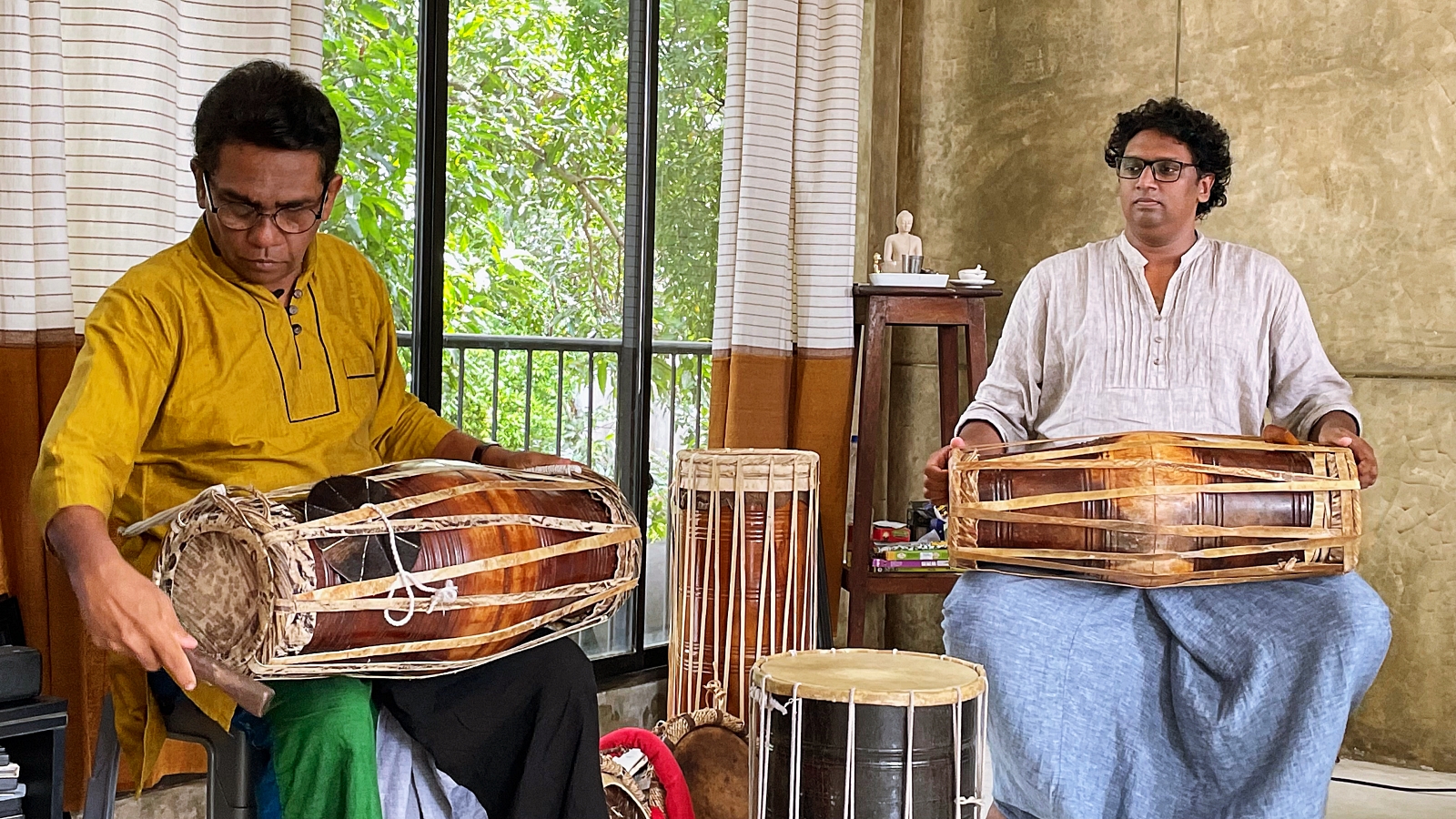
Today, he is the idol of Kandyan music and dance, whose work includes traditional choreographies, full-length ballets with linear plots, modern dance pieces, and brief ballets with thematic and abstract themes. He has been practising classical dance for the last forty years, and the information he shared with me on this day will stay with me for a lifetime. Not only has Vidyapathi received numerous awards for his dramatic performances as a modern stage dancer, but he’s also, a well-known drummer skilled in many Indian and Sri Lankan drums, such as the Gatabera, Pakhavaj, and Tabla.
By melding traditional drumming with global music genres like jazz, western classical, and Indian classical – Ravibandhu is known to have given Sri Lankan music new dimensions. He is the eight-generation dancer of his mother’s lineage, closely connected to the Kandy Esala Perahera. It’s hardly surprising that Vidyapathy has such an in-depth understanding of Buddhist traditions, ceremonies, and dancing styles, given his rich heritage. His ancestry dates back to the 18th century, and the lone history carries about seven to eight forms of generation-to-generation dances, with Kandayan being the most notable.
Ravibandhu says, “Although Sri Lanka is an island and is slightly distant from India, the two countries share the same culture, and the majority of Sri Lanka’s culture derives from or is filtered down from South Indian culture, with a little coming from North Indian culture. As you may be aware, Sri Lanka is predominately a Buddhist country; nevertheless, there are also Muslims, Hindus, and several other sects of other religions. As a result, Sri Lankan culture can be broadly characterised as a synthesis of all those civilisations, but it is predominately Buddhist because Buddhism has been an important part of everyone’s upbringing in Sri Lanka from the Anuradhapura period, which dates from the second to the third century.”
He adds, “Living in a Buddhist culture enriched by all other civilisations, Sri Lanka is a place with a very diverse cultural heritage. And because culture is everything in Sri Lanka, the arts are a huge part of Lanka and on top of that, dance, the form of art created by the human body, is one of the fundamental human drives. Because dance is life itself rather than an extract or an abstraction of life, it is the highest form of art; and the reason for this is that our bodies serve as the dance’s instrument.”
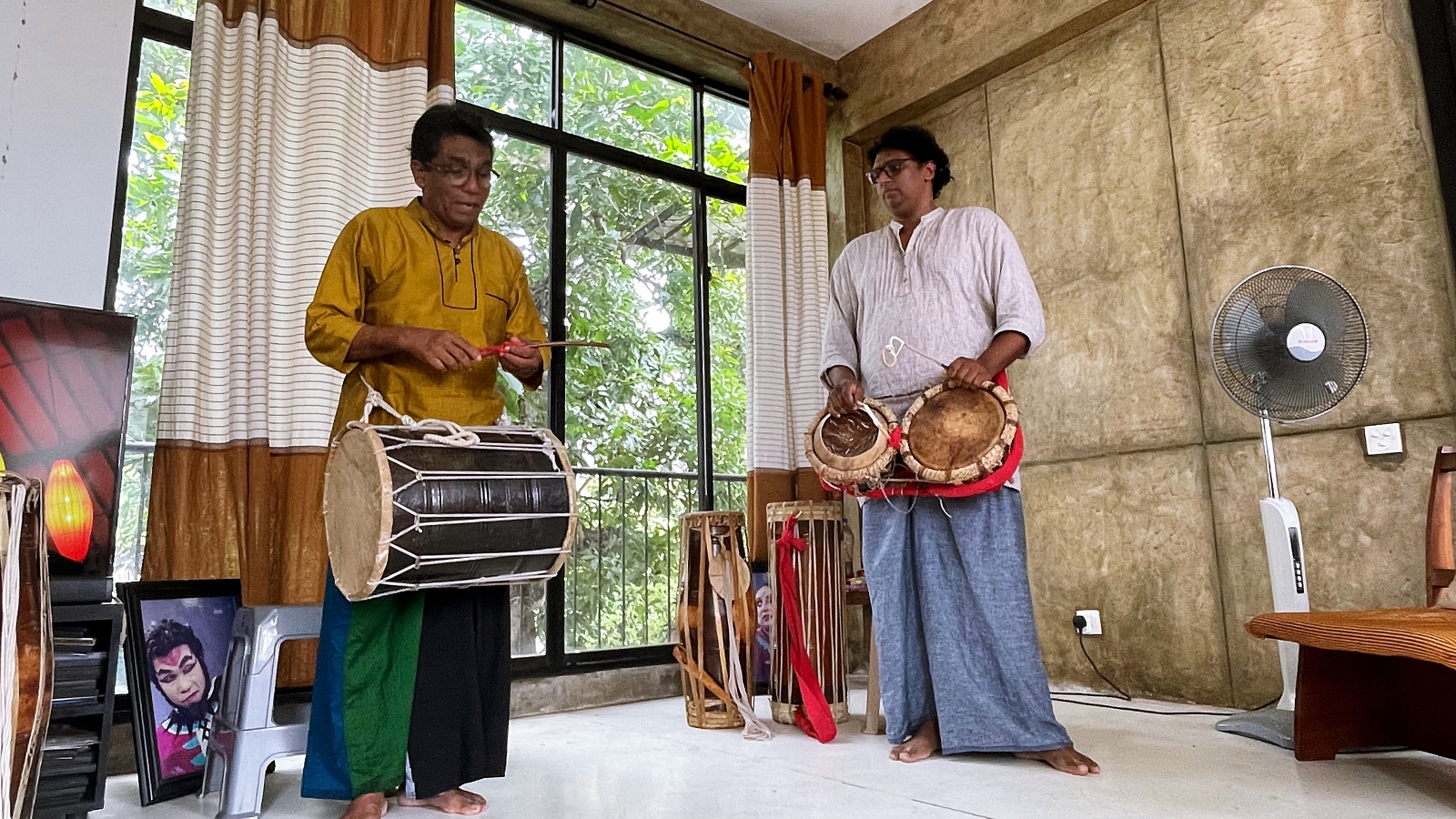
Speaking of Sri Lankan culture, the island is open to both the East and the West from both sides, making it a melting pot of various ethnicities, faiths, and cultural expressions. To demonstrate some of the music and dance styles used in Buddhist festivals, we were joined by Jithendra, Ravibandhu’s son, who runs his studio on the ground floor and is also a percussionist, composer, and sound engineer, and his daughter, who is the lead dancer and teacher of the dance academy and is a trained traditional dancer.
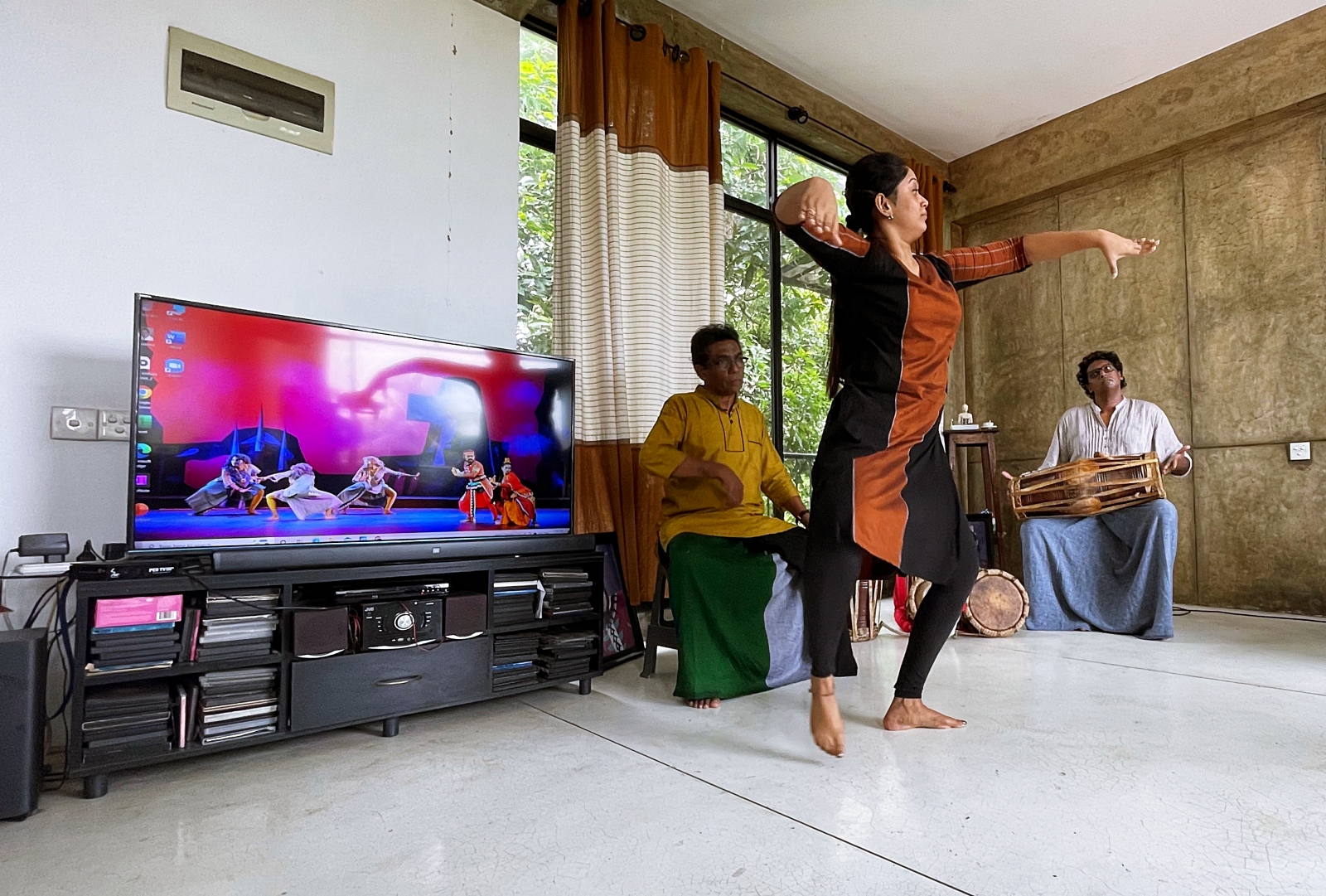
Kandyan dance fundamentals were demonstrated by Amrita, and Ravibandhu delineated the intent of each step. Later, I saw Kandyan dancers performing the exact moves at the Kandy Perahera. Whilst demonstrating Sri Lankan dance styles, Ravibandhu highlighted the three primary, distinctly diverse classical dance genres practised throughout the country. The Sabaragamuwa Natum, are midland Sabaragamuwa dances, according to Ravibandhu Vidyapathy.
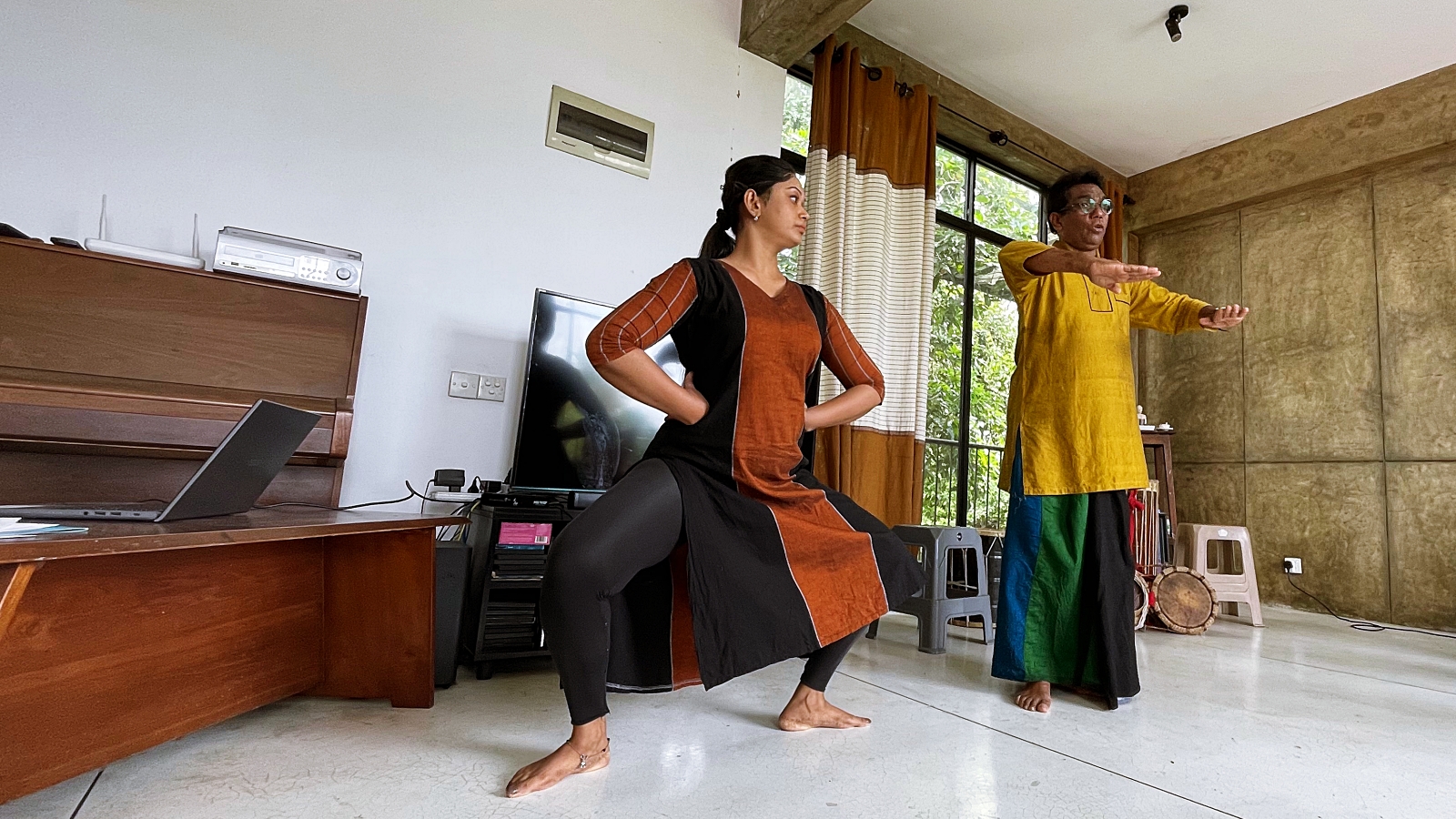
“We have the Kandyan dance, known as Uda Rata Natum, from the up country (central highlands), the hill country; and low country dance of the southern plains, known as Pahatha Rata Natum. The Natum is derived from the Sanskrit word, Natyam, meaning dance,” he adds.
The elemental postures, hand gestures, and many other characteristics of Sri Lankan dance are quite similar to Indian dances. However, the individuality of Sri Lankan dance genres stands out more with Odissi, Kathak Kali, hand gestures, and the application of special mudras. These traditional dance genres all have their roots in time-honoured dance events. The rituals either healed the sick, or blessed society as a whole, whereas the dancing served as a form of psychotherapy. As a result, a suffering individual must sit through the full night of the lengthy, elaborate performances.
All the performances, including the delightful dancing and blessing chants, impact the ill person’s psyche, relieving him of his misery. This is accomplished by invoking a specific figure, a demon or a deity, and asking him to ward off any evil that may be present in the ailing person’s body. Offerings are made to the divinity or demon in exchange for his services. In a few rituals, multiple deities and devils are summoned during the night, and by dawn, the patient is rid of his psychological burden. Theyyam, a traditional Kerala performing art, closely matches the spirit of these rites and serves the same purpose therefore, the renditions often appear trance-like with frenetic hand and body gestures.
Festivals in Sri Lanka occur at specific times of the year. From January to February, then during harvest in April and May, and finally in December, for reasons connected to mostly weather patterns. Folk dance genres depicting agricultural tasks are not very old, mentions Ravibandhu. He tells me that the harvest dance was created in the early 1950s by one of the pioneering dancers who presented it. Other traditional dance techniques that have been part of Sri Lankan culture for millennia include the stick dance and the dance with symbols.
The primary dancing style of the Kandy Perahera, the Kandyan dance, was fostered by the Kohomba Kankariya rite. In this ritual, the dancers stand in for the god Kohomba, also known as ‘Neem,’ a healing and cleansing plant. Similar to India, Sri Lanka uses neem on several occasions for purification. The dancer’s outfit is an illustration of God Kohomba, and as the word is also used to refer to paddy, it has both an agricultural and a medical meaning in this context.
Consequently, the tradition comprises an extensive ceremonial performance that lasts from twilight until the next day’s dawn and occasionally even into the middle of the next day. Dancers dressed in Naiyandi costumes perform during the Kohomba Kankariya festival while the lamps are lit, and food is prepared for the demons. A dancer wears a white attire, a white turban, a waistline, rows of beads around his neck, silver chains, brass shoulder plates, anklets, and jingles, among other embellishments. On particular occasions, this dance is also performed, in the Kataragama Devales and Maha Vishnu temples. The dancers are adept at dance, chanting, and evil-curing.
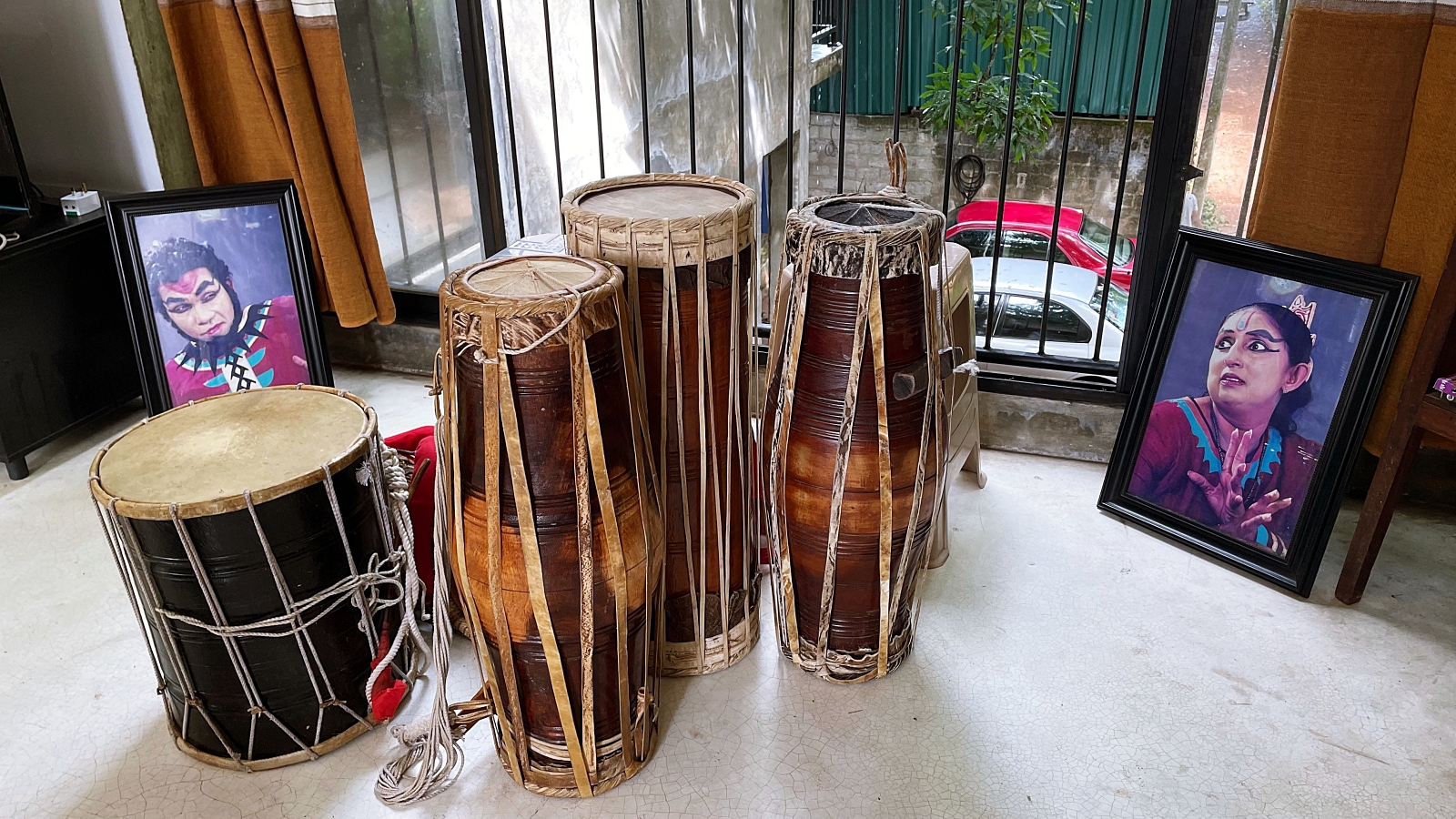
Ravibandhu sang Buddhist canticles in between, playing two distinct kinds of drums with Jithendra. The Geta Bera drum, which serves as the primary accompaniment for the Kandyan dance, is similar to the Tabla or Idakka in Kathakali. The deco in Sri Lanka’s low country dance is more or less equivalent to those in Theyyam because they are made from delicate coconut leaves and the stump of a banana tree, which provides a reminder of the cultural links between South Indian and Sri Lankan people.
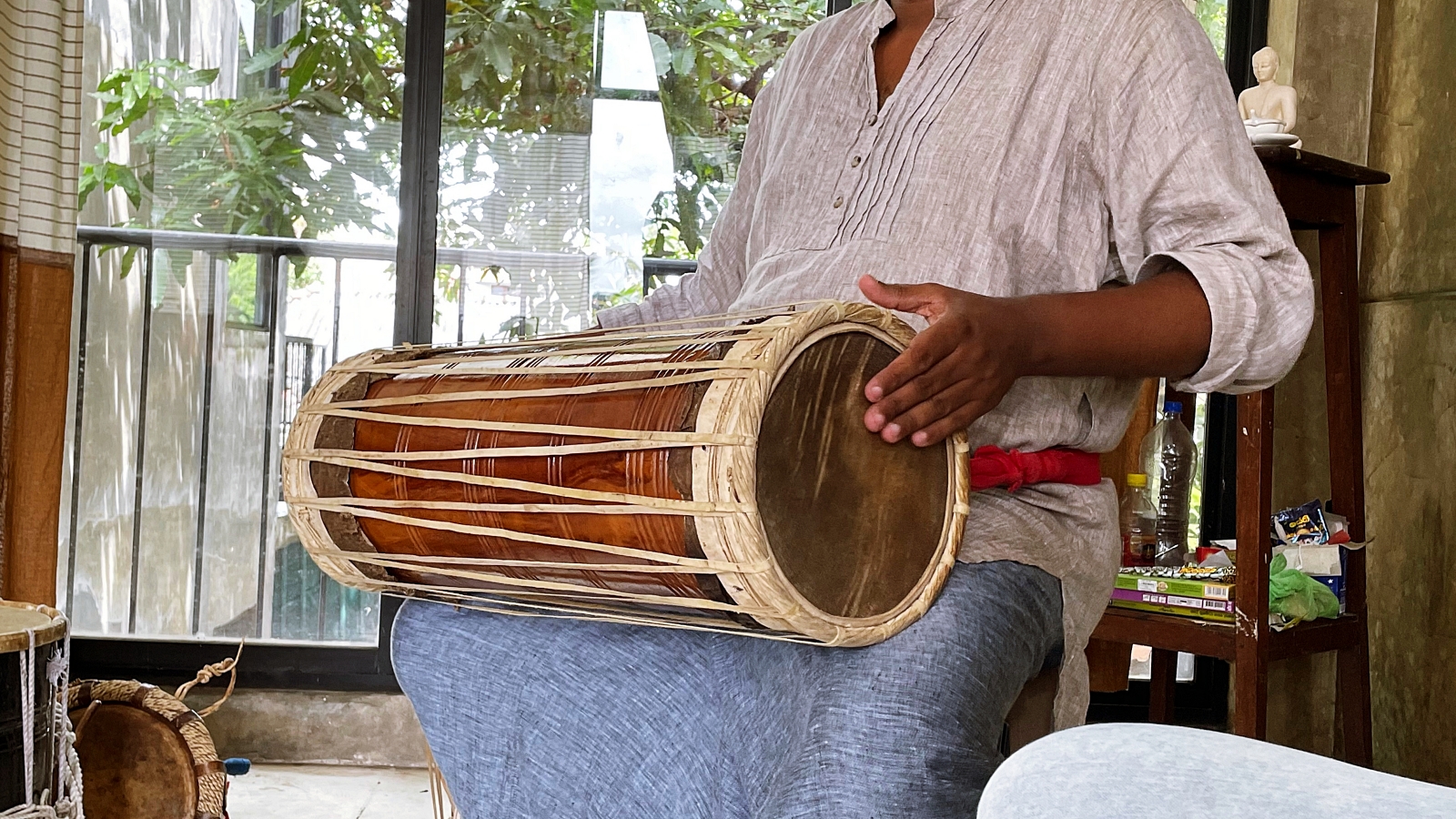
There are three types of rituals: those that worship gods, those that worship devils, and those that proportionate the planetary deities to ward off any harm that the planets may have brought forth. This endeavour is marked by a one-of-a-kind ritual known as Pali. Both Kohomba Kankariya and Pali are concerned with gods, and each has a number of significant rituals, not just one. The Perahera is connected with a riot of rites, and the dancers portraying the deities wear red, white, and silver outfits.
Every ceremony’s massive Pandal, fashioned of palm and coconut leaves, portrays the god’s abode. After being invited to this Pandal, it is thought that gods will stay there throughout the ritual. Hindus have their own set of ceremonies in addition to the standard Buddhist rites. Ravibandhu concluded the dialogue by exhibiting numerous Kandyan dance forms employed during the Kandy Perahera with his daughter Amrita as his son Jithendra played the Geta Bera drum in the background.
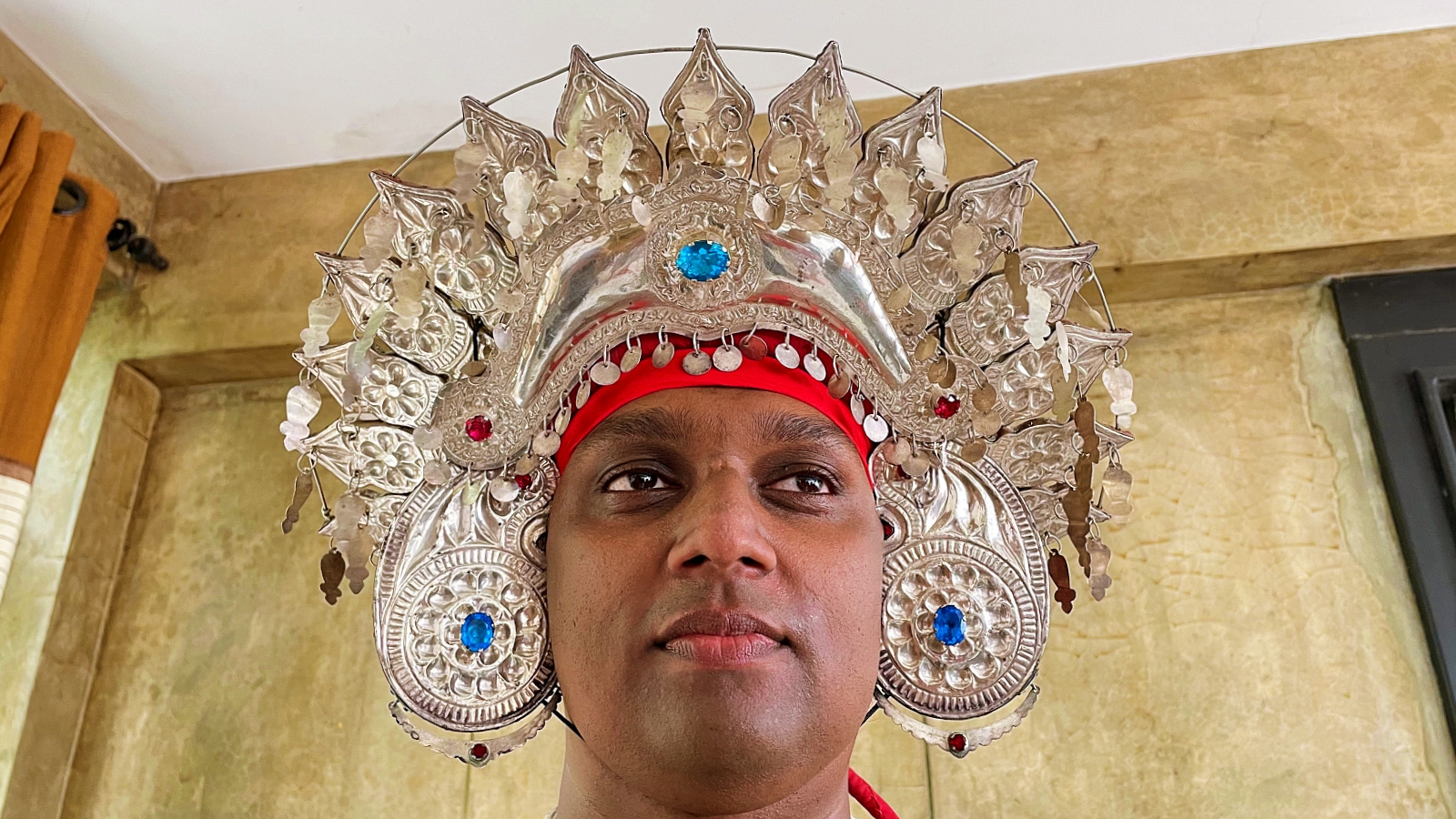
The family also allowed me to see original Kandyan headdresses and jewellery. These ornamentations are exclusively available to professional dancers, making them a valuable treasure to behold. I dropped by the dance school one final time and then drove to Kandy, where I witnessed each of these dance rites with an estimated ten thousand spectators on the second last day of the Kandy Esala Perahera 2022. It was magical, least to say!

